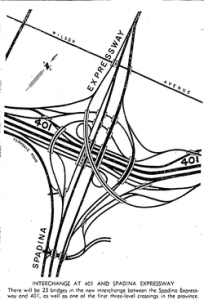By Rebecca Payne
This June, the Annex Residents’ Association and the Heritage Toronto will dedicate two plaques to commemorate the grassroots community action that helped halt the construction of the planned Spadina Expressway. One is proposed for the northeast corner of Spadina Road and Bloor Street West, and the other for the Kendall Street subway entrance.
The expressway would have cut through the heart of many of the city’s neighbourhoods (including Cedarvale, Forest Hill, and the Annex), and many homes would have been razed to accommodate it—not to mention the increase in noise, traffic, and pollution it would have caused.
“If we are building a transportation system to serve the automobile, the Spadina Expressway would be a good place to start. But if we are building a transportation system to serve people, the Spadina Expressway is a good place to stop,” said then-premier Bill Davis.
Notable luminaries of the time became involved in the fight, including: historian, philosopher, and literary critic Lewis Mumford, communication theorist and academic icon Marshall McLuhan and the much-lauded writer and urban theorist Jane Jacobs.
In the Annex, the Stop Spadina, Save Our City Coordinating Committee (SSSOCCC) was formed in 1969.
The group organized petitions and public lectures, eventually banning together with other opposition groups in the city under the moniker The Spadina Review Corporation (SRC). In 1971 the project was over budget and had only been completed to Lawrence Avenue. Metro Council opted to apply to the Ontario Municipal Board for approval to secure funds.
At subsequent hearings, the SRC went head-to-head with Metro Council; Metro’s case was based on studies showing that the project was needed to handle the predicted increase in traffic and the SRC’s case raised the concerns of citizens. The SRC lost the vote, but then appealed to the provincial cabinet, which reneged its support—and stopped the Spadina Expressway.
The plaques will honour notable leaders of the community who were involved, and suggestions for the text will be solicited from those who played a role in this important period in our city’s history.

